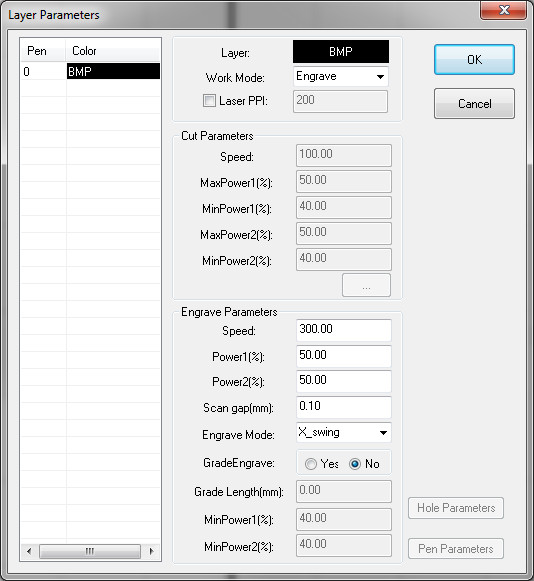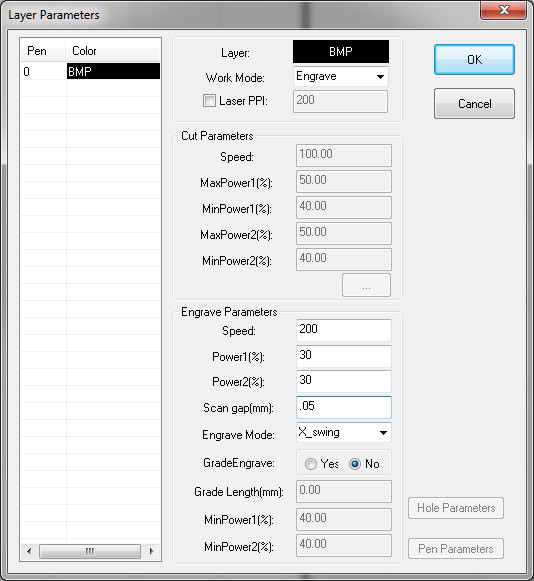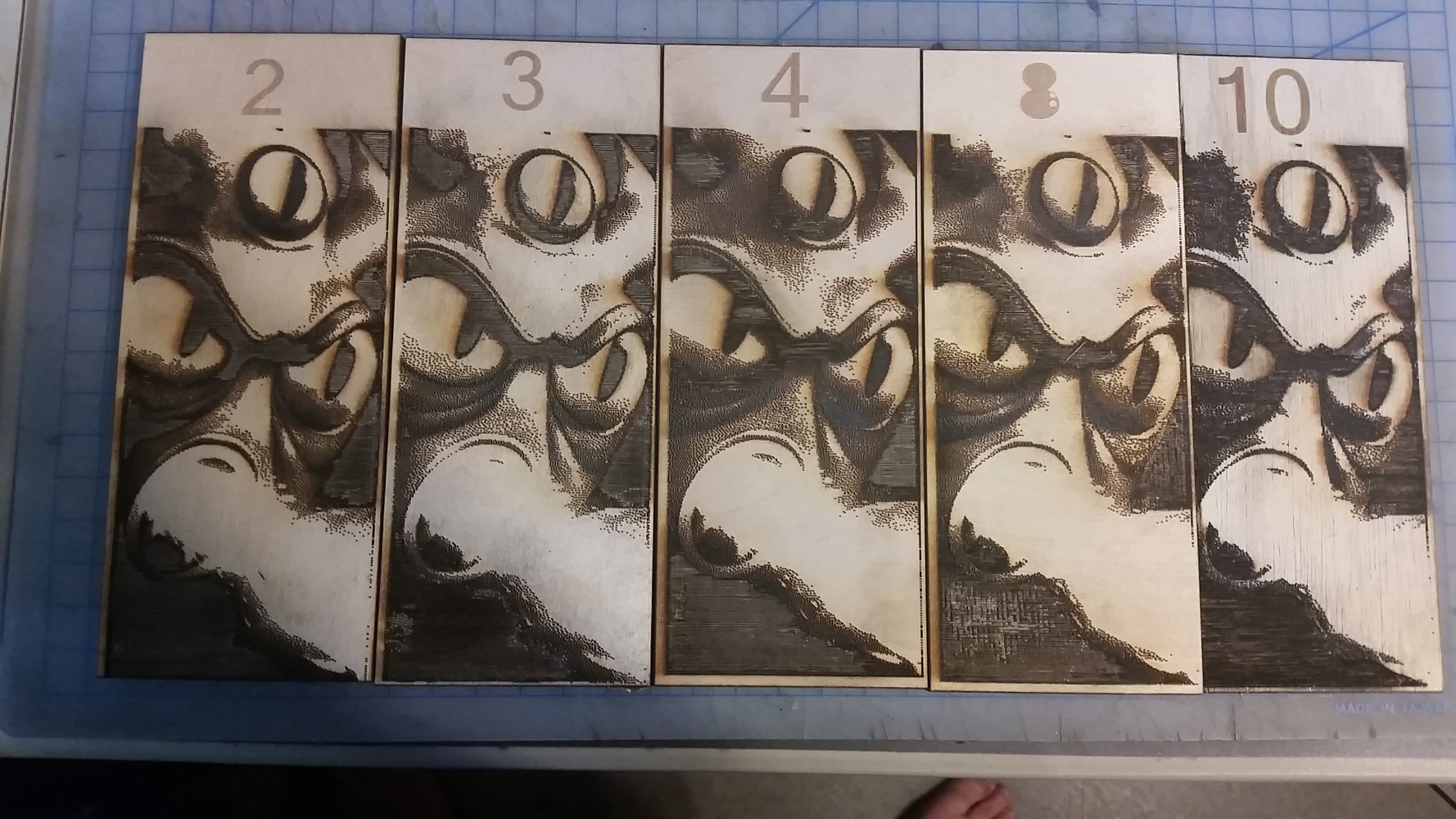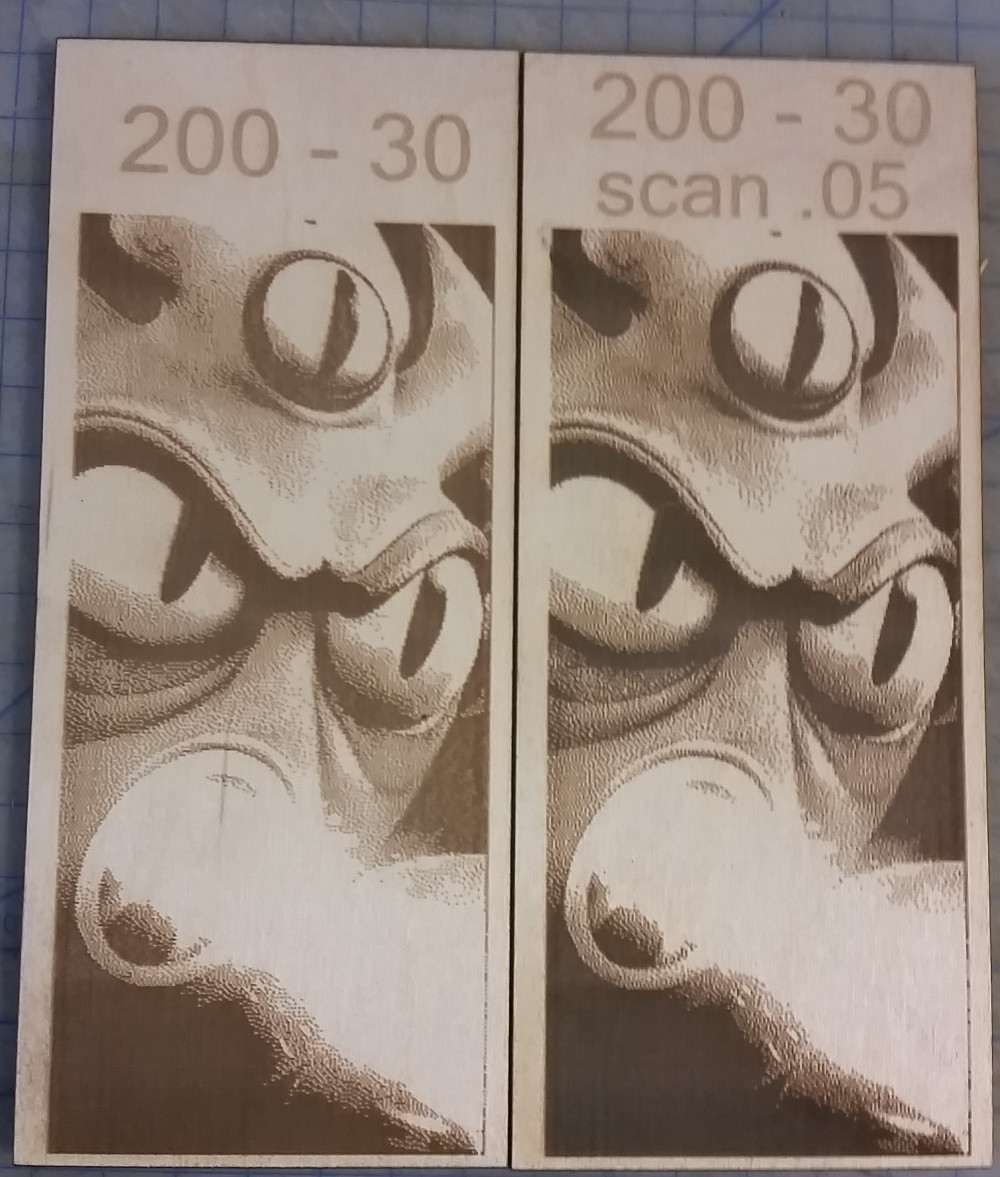Table of Contents
This tutorial is a work in progress and will be updated as I get more screenshots and images. I am by no means an expert and if you know of a better way, feel free to join us in the Talk thread.
The purpose of this tutorial is to walk you through the steps required to convert a full color image into something the laser cutter can work with to etch the image. For the sake of this tutorial, I am using Gimp which is a free alternative to Photoshop, an image I found on Google Images, and 6mm baltic birch from Windsor Plywood. The power settings I suggest are low enough that they should work just fine for 3mm if that is what you have on hand, but feel free to use up a piece of scrap from on top of the material storage to try this. You will only need a piece that measures 3.5“ x 7” so there will almost certainly be a piece big enough there to try this for free.
Index
- Basic step-by-step walkthrough for those who are looking for an answer
- Importing the image into LaserCAD and making the cut
- Advanced image prep discussion for those who actually want to experiment and play around with the process.
Basic Image Prep
Here is the base image we are going to work from, which some of you may recognize as Fred from the movie Big Hero Six, and the finished result.
Prepare the image After finding the image you want to etch, the next step is to convert it into an image that our laser can recognize and work with. Open the image up in Gimp. You can scale it [on the menu bar, click Image then Scale Image], crop it using the tool that looks like an X-Acto knife, and do whatever else you have to do to get ready.
Once you are ready to move on, we get to the fun part. Getting just the right settings for this step might take some experimentation so I am going to include images of my tests as we go. Click on Image > Mode > Indexed
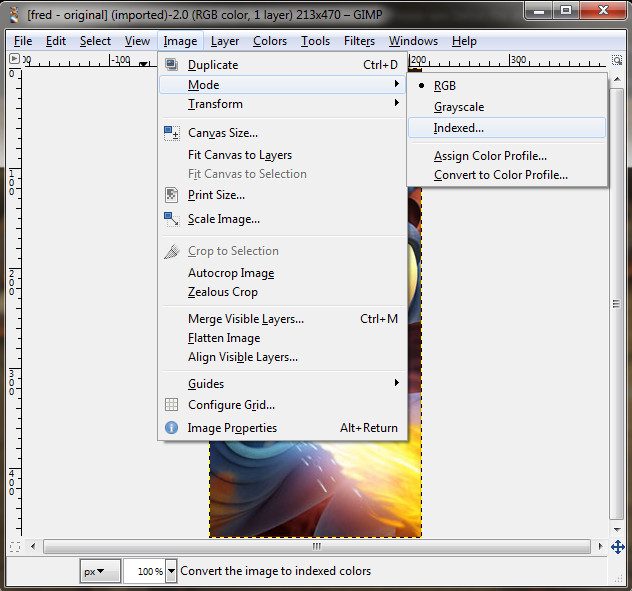
You will get a popup that looks like this:
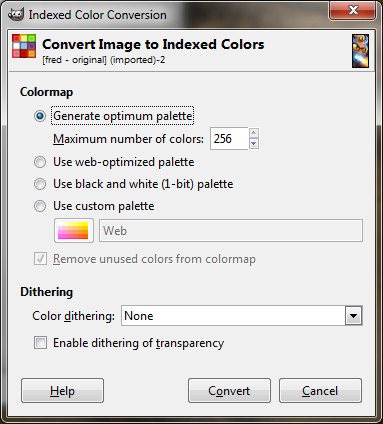
I will give examples later of what the various settings look like, but for now, I suggest starting with maximum of 4 colors and enabling the Floyd-Steinberg dithering like so:
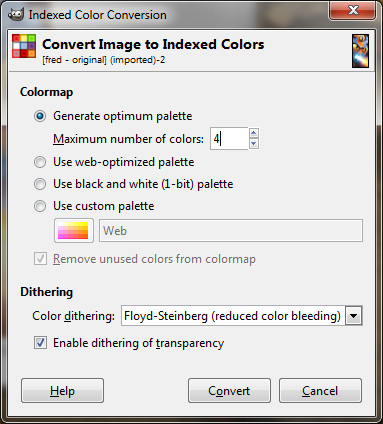
For those playing along at home, your image will now look like this:

The next step is to convert that to a greyscale image that the laser can use by going to Image > Mode > Greyscale
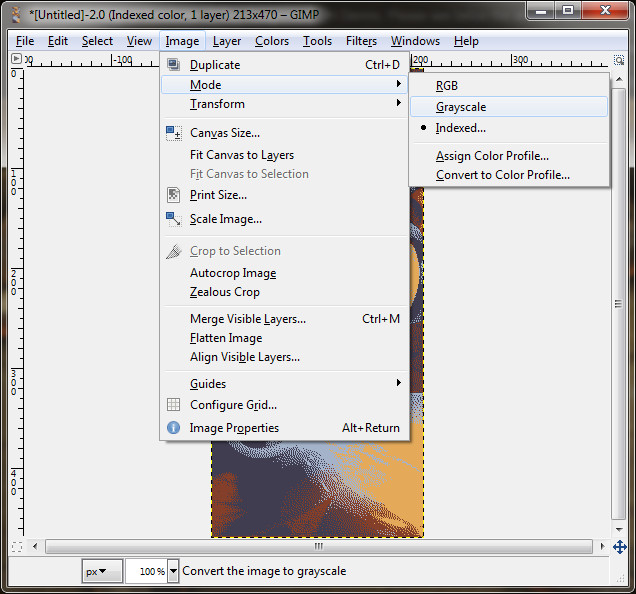
Your image should now look like this. Export it as a jpg and it will be ready to import into LaserCAD!

LaserCAD
This part is surprisingly easy once the artwork is prepped correctly. Open LaserCAD and import the jpg image:
It will look horrible and distorted, trust in the force.

Things to note are that where you normally see a color swatch on the “Layer Options” section where you pick your power settings, you now have a row for “BMP” with the mode set to “Engrave”.
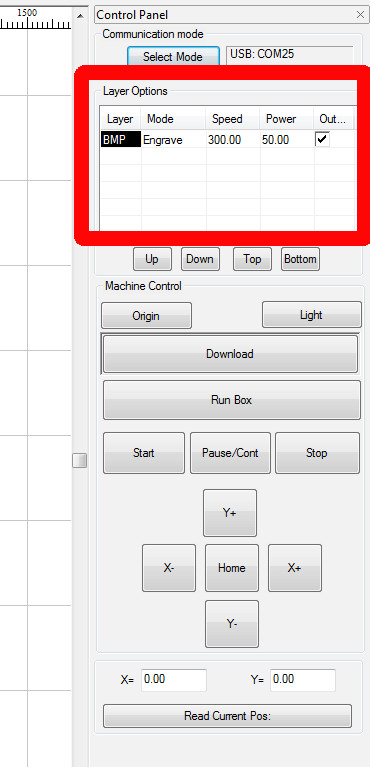
Double click on there to open your Layer Parameters menu where you will set your power and speed:
The advanced section will go into detail on how I came up with these settings but for this project change the speed to 200, power1 and power2 to 30, and scan gap to 0.05 and click OK.
Now you might want to use the rectangle tool to make a box around the art and set the power for that to whatever you need to use to cut through the material in order to give it a nice clean cut. From here it is exactly like any other laser project. Download your file to the laser, run a box to align the material, hit start, and enjoy. This file with these settings will end up with a piece measuring roughly 3.5“x7” and will take around 20 minutes or so to run. Enjoy!
Advanced Image Prep
This section will not be a step by step walkthrough so much as a discussion on how came up with the numbers in the preceding steps in case you want to take this further and try with different images.
Starting with the original color image, I went through the steps above to convert and save the file using various index settings starting at 2 colors all the way up to 20. Each of these was indexed, dithered, greytoned, imported into Lasercad and individually run using identical power and speed settings, and cut out onto a tile with the index number etched onto the tile along with the image. When I lined them up, I picked which one I thought had the most detail.
I personally decided that the jump from 4 to 8 seemed to be a step down in quality so I ran it at 10 to make sure it wasn't an anomaly. I still liked the detail in 4 better than 10 so I didn't bother running anything higher than that.
Next, I took the file that was indexed to 4 colors and played with the power and speed settings to find the one I liked best:
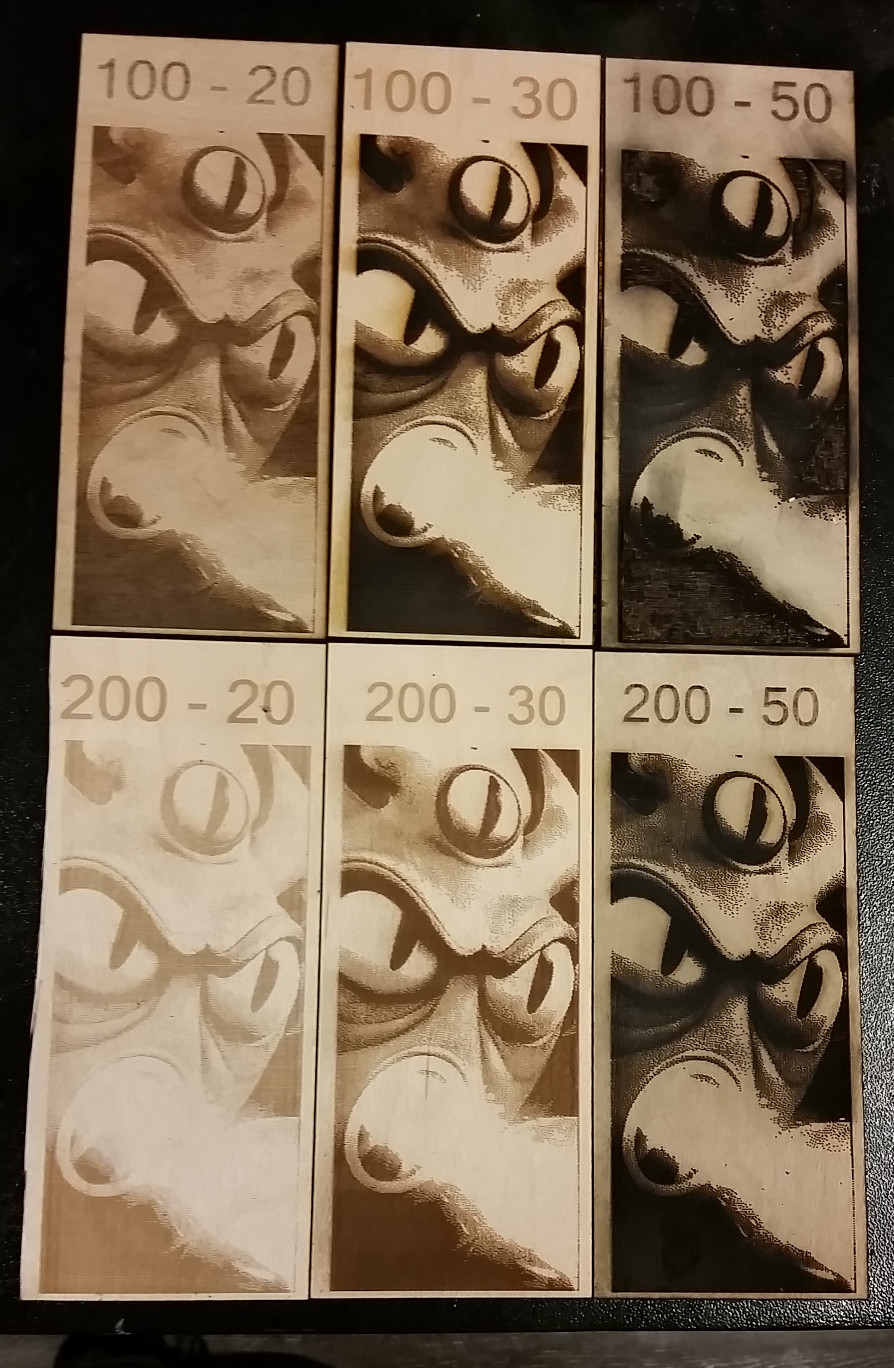
Power 50 cut clear through the top layer of the plywood and left ugly gaps, the 20 vs 30 I suppose is a matter of personal preference. I picked power 200, speed 30 since I think it had the best contrast and detail.
From there, I ran the one I liked the best so far [index 4, power 200, speed 30] again, but with half of the line scan [changed from .1 to .05]. This doubled the etch time so it may or may not be worthwhile, depending on your project. Here is a side by side of the results:
The difference is definitely noticeable, but I'll let you decide if it is enough of a difference to double your cut time.
I might hang all of these tiles up on a wall near the laser for people to have a look and judge for themselves once I am done with them.
Where to go from here
- Addition: I will add an advanced prep section here on how to add some detail back in to the image by layering in some vector lines to etch as accents and detail lines, such as breaking up the solid mass of flames and making the lips/mouth more distinct in the image we used here
- Experiment: How will this look on leather? It could make a REALLY fun project to etch art like this for a leather wallet
- Experiment: This is art of a larger project to incorporate all of the characters from Big Hero 7 into an image for a gift so my next step is going to be a much larger image which I suspect will require multiple sections at different index settings in order to get the most “resolution” out of each character in the final etch. This may require the image itself be sliced into multiple files and reassembled on lasercad, experimentation to come.
- Hyperdither: There's another dithering method that requires further experimentation: Hyperdither! Source code here.



